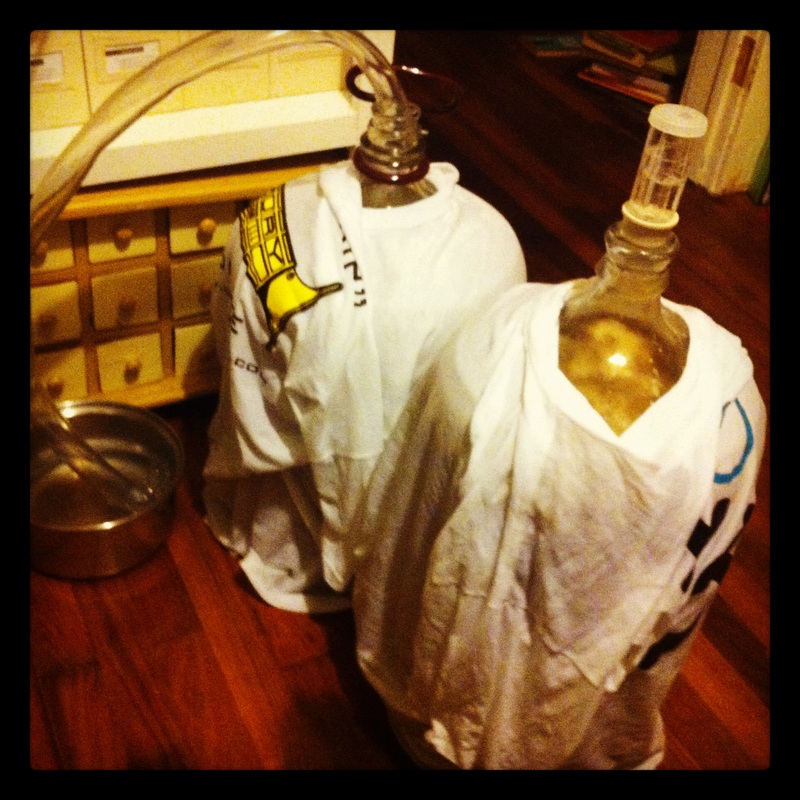A crucial factor in a beer's flavor is the temperature at which it was fermented. Since my beer ferments at whatever temperature my house is the flavors can vary batch to batch, despite using similar ingredients. Normally a beer will have more flavors and aromas--both good and bad--when it is brewed at a higher temperature versus a lower. The beers from the massive corporations (e.g., Bud, Coors, Stella Artois) are brewed in cold environments. This produces an absence of flavor that makes the beer chuggable and complementary to nachos and burnt weenies.
As a brewer, I eschew the modern style of brewing. Those in the business of brewing need to make a consistent product, so they rely on obsessive cleaning and strict purity in their methods. Many amateur brewers follow suit as they try to emulate the beers they love. But I don't care for that school of brewing. I have romanticized notions of brewing in dusty barns on Belgian farms. These beers were brewed with varying ingredients, inoculated with native yeasts and fermented in uncontrolled settings. Terroir is an important quality of beers I like, but commercial brewers have another term for when the local flavor creeps in: infection.
The farmhouse-style method I describe is suitable for me because I have a generally half-assed approach to all things. Many homebrewing books will try to scare you into wearing a hazmat suit while you brew in a sterile bubble at 68 degrees. But beer is tough. It's been with us for thousands of years. This is how I connect with my ancestors.


 RSS Feed
RSS Feed
